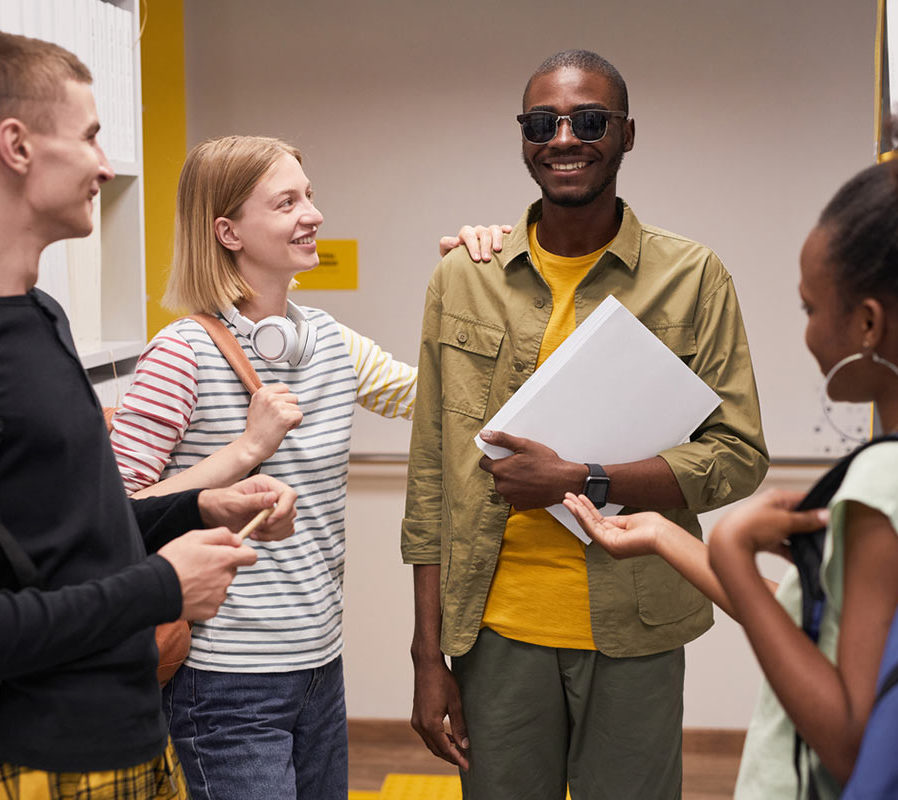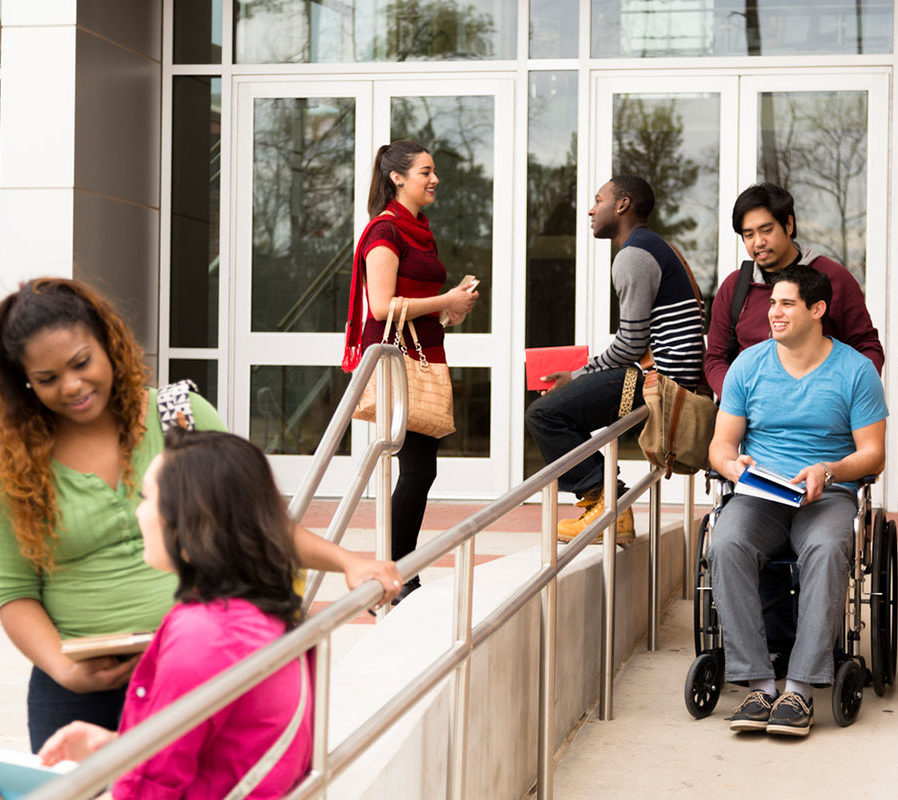Introduction
How disability is constructed and perceived ultimately determines and influences how larger societal systems treat disabled individuals. Moving past definitions and models of disability that focus on negative embodiments, inability, and deficiency is critical if we are to consider accessibility and equity for disabled individuals in our teaching and learning institutions.
Below, we review some of the key framings of disability as well as the medical and social models of disability. When approaching these topics, it is important to consider the implications that certain framings of disability have within larger society.
Disability
Disability is not a static term and there is not a ‘one size fits all’ catch all definition that will capture precisely what disability means and is for one person. Disability is a diverse and unique experience — how one person experiences disability will be different from the next. A variety of definitions and perspectives of disability exist that reflect the diverse contexts that they were developed within including bureaucratic institutions, systems of discrimination, advocacy and resistance movements, social and disability justice realms, and more.
Disability is often construed as something that is ‘not normal’ while individuals who are considered ‘able’ are taken for granted as being ‘normal.’ The very classification of ability and normalcy contributes to marginalization:
“Disability is a social construction rather than a biological given, and the classification of disability is really a means of normalizing and privileging some bodies while pathologizing, subordinating, and marginalizing others” (Withers, 2012).
The construct of normalcy serves as the basis from which many disabled individuals experience discrimination and a lack of access in a variety of environments. In our ableism/disablism article, we unpack how disability is used as the basis for discrimination and oppression throughout a variety of systems and institutions.
Some definitions of disability are often centered on what a person can and cannot do. As Emily Ladau (2021) reminds us, there are many other ways to define disability that do not reduce it simply to inability and defines disability as “a state of being; a natural part of the human experience.”
There are different kinds of disabilities that exist in countless different ways. Ladau (2021) identifies the following generally recognized broad categories of disabilities:
- Chronic Illnesses can have an ongoing effect on varying aspects of a person’s physical and mental health.
- Communication disorders affect how a person conveys and/or comprehends information.
- Developmental disabilities can affect the trajectory of a person’s physical or cognitive growth.
- Hearing disabilities partially or completely affect a person’s ability to hear.
- Intellectual disabilities can affect a person’s communication, cognition, and personal and interpersonal activities.
- Learning disabilities affect the ways a person can learn, process, and understand different subject areas.
- Mental health disabilities can affect a person’s thoughts, moods, and behavior.
- Neurological disorders can affect different parts of a person’s nervous system, which can in turn affect them in many ways, including physically, cognitively, and emotionally.
- Physical disabilities can affect a person’s movement, dexterity, or stamina.
- Vision disabilities partially or completed affect a person’s ability to see.
(Ladau, 2021, pp. 35-36)
While these categories are helpful for classification, we cannot make assumptions about a person’s disability just from definitions and taxonomies. We cannot make assumptions about how someone’s disability affects them, as disability is an inherently personal experience.
Some disabilities can be temporary (like a broken bone) and some can be acquired. Some disabilities are apparent — meaning that it is “noticeable to other people based on either outward appearance or communication (Ladau, 2021). Conversely, a nonapparent disability “is something you likely can’t tell a person has when looking at or communicating with them” (Ladau, 2021). Apparent and nonapparent disabilities are sometimes referred to as visible and invisible disabilities respectively.
Models of Disability
Different frameworks, or models, of disability exist to “conceptualize disability as it relates to who we are and the world around us” (Ladau, 2021). The Medical and Social Models of Disability are the two most common models of disability, but others exist including the biopsychosocial model, the charity model, the cultural model, the human rights model, and more. Below we review the medical and social models of disability.
The Medical Model
When contextualizing and analyzing disability within larger society, disability studies scholars turn to two models of disability: the medical model and the social model.
The Medical Model of Disability frames disability as the root of the problem that lies with the individual rather than surrounding social structures and systems. Generally, the medical model views disability as a deficiency. The medical model also frames non-disabled individuals and bodies as ‘normal’ and disabled individuals and bodies as ‘abnormal.’ In this model, the disabled individual is essentially the barrier, and it is that person that needs to be addressed in terms of access. The medical model also prioritizes medical diagnoses and documentation as a means of identifying disability as well as receiving accommodations or other services to reduce barriers.
Understandably, the medical model is problematic in many ways. First, the medical model is focused on “fixing the disability to the greatest extent possible” and ‘normalizing’ the individual (Haegele & Hodge, 2016). Second, the medical model posits a normative understanding of disability — disabled people are understood as not being able to function in the ways a ‘normal’ person can (Mitra, 2006). As well, the medical model hyper focuses on the individual while ignoring the systemic issues in society that produce barriers and limit accessibility (deBie & Brown, 2017).
The medical model still dominates much of the services and supports developed to support disabled individuals. For instance, the academic accommodation model is largely based on the medical model of disability with its emphasis on diagnosis and documentation.
The Social Model
The Social Model of Disability was developed as a response to challenges with the medical model. The main idea at the core of the social model is that people are “not disabled by [their] impairments but by the disabling barriers [they] face in society” (Oliver, 2013). There are numerous variants of the social model that generally all posit that the problem is not the person with a disability, but the barriers in the surrounding environment (Mitra, 2006). In the social model of disability, “it is society that imposes disability on individuals with impairments” (Hagele & Hodge, 2016).
The difference between the medical and social models is encapsulated by Brown and Leigh (2018):
“Depending on one’s ontological and epistemological view, disability is either considered as the experience resulting from a biological or medical focus on the personal, or as the experience of social oppression and environmental barriers. Within the binary of the medical versus the social model of disability, impairment or chronic illness focus on the biological and functional, whereas disability reflects the social and environmental response to the biological and functional.”
Some have suggested that the social model is too limited in how it views disability and it fails to take account of the breadth of diverse disability experiences (Oliver, 2013). Critiques of both models exist and “neither the medical nor the social model can exist independently of each other” and no model can fully capture the depth and breadth of disability (Ladau, 2021). Models and frameworks help to inform our understandings of disability and reflect how larger society understands disability. Yet no one model can capture the diversity and complexity of disability writ large.
Summary/Key Takeaways
How disability is constructed, thought of, and perceived influences how disabled staff and students are treated in our teaching and learning institutions. Different models of disability exist to help us conceptualize disability and one’s relationship to surrounding environments. As we think about accessibility and equity for disabled individuals, we must challenge ourselves to deconstruct constructions of ‘normalcy’ and ‘deficiency.’



